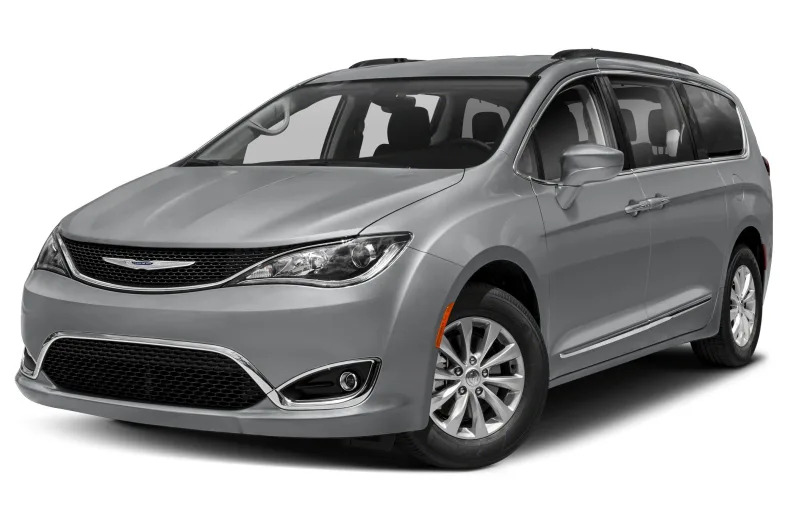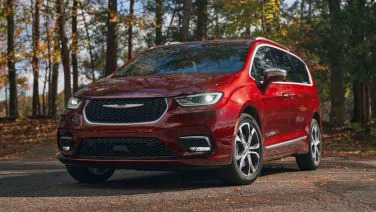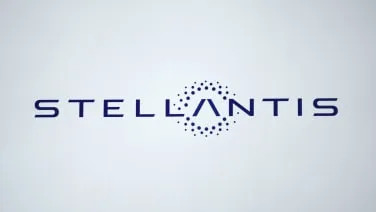Touring-L Front-Wheel Drive Passenger Van
2017 Chrysler Pacifica
In the 1980s, minivans succeeded station wagons as the vehicle of choice to move families. The Chrysler Town & Country, Dodge Caravan, and Plymouth Voyager broke that ground, and Chrysler has owned the segment for most of its existence. Though still popular with practical types, minivans have been ceding ground to crossovers for a while, and after 30 years, minivan evolution has slowed, with only the occasional noteworthy feature like a built-in vacuum making headlines. The 2017 Chrysler Pacifica Hybrid is the next big idea in the segment. In fact, we think its plug-in hybrid powertrain is the biggest minivan idea since the original. Yes, we're excited about a hybrid people mover. For 2017, Chrysler has reworked, refocused, and renamed its minivan effort, ditching the Town & Country moniker in lieu of the Pacifica nameplate. The odd recycled name aside, it's not only far superior to Chrysler's outgoing minivan, but, with most of the competition several years old, the new Pacifica is easily the current class leader. But while the minivan's practicality is undeniable, they're not always the most efficient. It's a wonder, then, that no competitor has packaged a hybrid system into a minivan before – especially Toyota, given its dominance in hybrid everything else. Toyota does offer a hybrid minivan in its home market, but the Sienna's only calling card is that it's now the sole American van to offer all-wheel drive, something Chrysler gave up when it started hiding the seats in the floor years ago. Owing in part to its newness, the non-hybrid Pacifica was already one of the most fuel-efficient minivans on the market, with ratings of 28 miles per gallon highway, 18 city, and 22 combined. Add in the hybrid equipment, with its 16-kWh battery pack providing 30 miles of electric-only range, and the new Pacifica Hybrid achieves an astounding 84 MPGe, trouncing everything else in the segment (because, again, it's the only hybrid van). When working as a hybrid and not in EV mode, the Pacifica Hybrid nets a combined rating of 32 mpg. On a full tank and a full charge, it has a range of 566 miles. The hybridized version weighs 650 pounds more than a standard Pacifica. That's after some of the added weight from batteries and motors has been offset by a hood, sliding doors, and liftgate made from aluminum instead of steel. The suspension has been adjusted well enough that you don't really notice the added mass driving down the road. The more noticeable impact of adding the battery pack concerns its location – it's stored under the floor, in the space normally reserved for the second-row Stow 'n Go seating when it's in its stowed position, although the third row is still stowable. Buyers will have to choose one or the other – the hybrid or the ability to make some seats vanish without lugging them out by hand – and for some, that may be a deal breaker. As long as you're not hauling full sheets …
Full Review
In the 1980s, minivans succeeded station wagons as the vehicle of choice to move families. The Chrysler Town & Country, Dodge Caravan, and Plymouth Voyager broke that ground, and Chrysler has owned the segment for most of its existence. Though still popular with practical types, minivans have been ceding ground to crossovers for a while, and after 30 years, minivan evolution has slowed, with only the occasional noteworthy feature like a built-in vacuum making headlines. The 2017 Chrysler Pacifica Hybrid is the next big idea in the segment. In fact, we think its plug-in hybrid powertrain is the biggest minivan idea since the original. Yes, we're excited about a hybrid people mover. For 2017, Chrysler has reworked, refocused, and renamed its minivan effort, ditching the Town & Country moniker in lieu of the Pacifica nameplate. The odd recycled name aside, it's not only far superior to Chrysler's outgoing minivan, but, with most of the competition several years old, the new Pacifica is easily the current class leader. But while the minivan's practicality is undeniable, they're not always the most efficient. It's a wonder, then, that no competitor has packaged a hybrid system into a minivan before – especially Toyota, given its dominance in hybrid everything else. Toyota does offer a hybrid minivan in its home market, but the Sienna's only calling card is that it's now the sole American van to offer all-wheel drive, something Chrysler gave up when it started hiding the seats in the floor years ago. Owing in part to its newness, the non-hybrid Pacifica was already one of the most fuel-efficient minivans on the market, with ratings of 28 miles per gallon highway, 18 city, and 22 combined. Add in the hybrid equipment, with its 16-kWh battery pack providing 30 miles of electric-only range, and the new Pacifica Hybrid achieves an astounding 84 MPGe, trouncing everything else in the segment (because, again, it's the only hybrid van). When working as a hybrid and not in EV mode, the Pacifica Hybrid nets a combined rating of 32 mpg. On a full tank and a full charge, it has a range of 566 miles. The hybridized version weighs 650 pounds more than a standard Pacifica. That's after some of the added weight from batteries and motors has been offset by a hood, sliding doors, and liftgate made from aluminum instead of steel. The suspension has been adjusted well enough that you don't really notice the added mass driving down the road. The more noticeable impact of adding the battery pack concerns its location – it's stored under the floor, in the space normally reserved for the second-row Stow 'n Go seating when it's in its stowed position, although the third row is still stowable. Buyers will have to choose one or the other – the hybrid or the ability to make some seats vanish without lugging them out by hand – and for some, that may be a deal breaker. As long as you're not hauling full sheets …
Hide Full Review
Hide Full Review
Retail Price
$34,995
MSRP / Window Sticker Price
| Engine | 3.6L V-6 |
| MPG | 19 City / 28 Hwy |
| Seating | 7 Passengers |
| Transmission | 9-spd auto w/OD |
| Power | 287 @ 6400 rpm |
| Drivetrain | front-wheel |
Smart Buy Program is powered by 






